Introduction
Spain, a land of sun-kissed beaches, vibrant festivals, and passionate flamenco, is also a treasure trove of cultural and historical wonders. From the ancient cave paintings of Altamira to the futuristic architecture of Valencia’s City of Arts and Sciences, every corner of the country tells a story. The rich tapestry of Spain’s history, woven with threads from Roman, Moorish, Gothic, and Renaissance eras, has given birth to a plethora of monuments, traditions, and tales that captivate the soul. While the entire nation is a testament to its diverse and profound heritage, there are certain cities that stand out as beacons of Spain’s illustrious past. These are the World Heritage Cities.
World Heritage Cities: What are they?
When we talk about World Heritage Cities, we’re referring to urban centers that have been recognized by the United Nations Educational, Scientific and Cultural Organization (UNESCO) for their outstanding universal value. These cities, often characterized by their rich history, architectural marvels, and cultural significance, offer a unique window into the past, telling tales of civilizations that once thrived and cultures that have left an indelible mark on humanity. In Spain, these cities are not just relics of the past; they are vibrant, living entities where history seamlessly blends with the present.
UNESCO’s criteria for designation:
The process of becoming a World Heritage City is rigorous, with UNESCO setting strict criteria that must be met. A city must demonstrate its significance in one or more of the following ways:
- Represent a masterpiece of human creative genius.
- Exhibit an important interchange of human values over time.
- Bear a unique or exceptional testimony to a cultural tradition or civilization.
- Be an outstanding example of a type of building or architectural ensemble that illustrates a significant stage in human history.
- Be directly associated with events or traditions, ideas, or beliefs of outstanding universal significance.
Spain’s World Heritage Cities, with their intricate tapestries of Moorish palaces, Gothic cathedrals, Roman ruins, and Renaissance squares, often meet multiple of these criteria, making them a must-visit for anyone keen on immersing themselves in a rich cultural experience.
For a comprehensive list of World Heritage Cities and detailed criteria, one can visit the official UNESCO World Heritage website (UNESCO World Heritage Centre).
Ávila: A timeless testament to Spain’s medieval splendor
The walls of Ávila: A sentinel of history
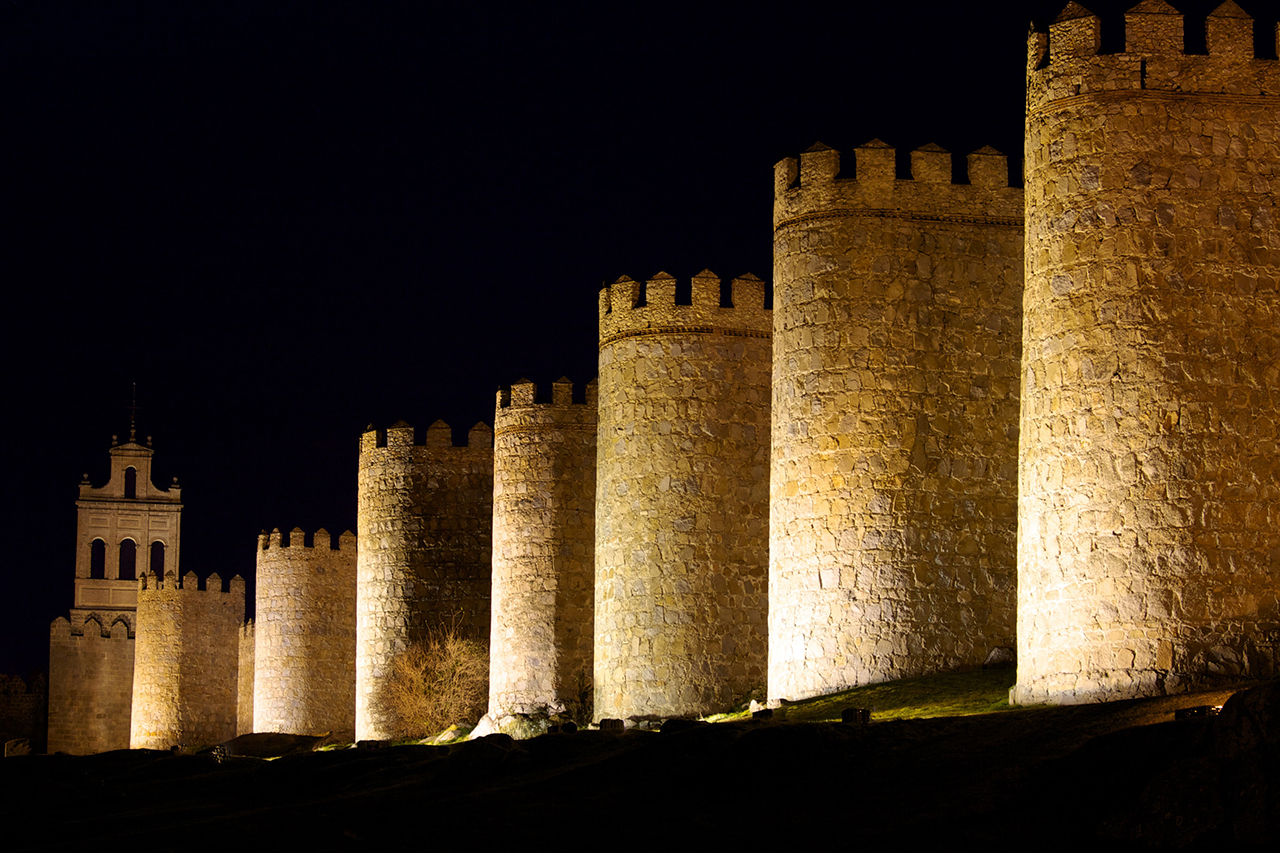
The iconic walls of Ávila stand as a testament to the city’s storied past. Constructed between the 11th and 14th centuries, these imposing fortifications have encircled Ávila for nearly a millennium, earning it the moniker “Town of Stones and Saints.” Stretching over 2.5 kilometers and punctuated by 88 towers and 9 gates, the walls are among the best-preserved medieval fortifications in Europe. Their significance isn’t just architectural; they bear witness to a time when the Reconquista was in full swing and cities like Ávila were on the frontier between Christian and Muslim realms.
Key monuments and attractions:
- The Cathedral of Ávila: Often considered a fortress in its own right, this Romanesque-Gothic cathedral is unique in that it’s partially integrated into the city’s walls. Its apse, resembling a bastion, forms one of the turrets of the walls, symbolizing the intertwining of faith and defense in Ávila’s history.
- Basilica of San Vicente: A stunning example of Romanesque architecture, this basilica is renowned for its intricate sculptures and the tomb of the martyrs Saint Vincent, Saint Sabina, and Saint Cristeta.
- Convent of Santa Teresa: Dedicated to Saint Teresa of Ávila, a prominent mystic and writer, this convent stands on the site of her birthplace. It houses a chapel, a museum, and relics associated with the saint.
- Palacio de los Verdugo: A quintessential example of a noble house from the 15th century, this palace’s robust stone facade and emblematic coat of arms transport visitors back to the times of knights and heraldry.
Getting to Ávila:
Ávila is conveniently located just over 100 kilometers northwest of Madrid, making it easily accessible for day-trippers and those looking for a longer stay.
- By train: The city is well-connected by Spain’s rail network, RENFE. Direct trains from Madrid’s Chamartín station can get you to Ávila in just over an hour. Check schedules and book tickets on the official RENFE website.
- By car: If you prefer the freedom of driving, the A-6 and AP-51 highways connect Madrid to Ávila. The journey typically takes around 1.5 hours.
- By bus: Several bus companies operate routes between Madrid and Ávila. The journey can take anywhere from 1.5 to 2 hours, depending on the service.
Ávila beckons with its rich tapestry of history, spirituality, and architectural marvels. Whether you’re walking atop its ancient walls, exploring its sacred spaces, or simply soaking in its timeless ambiance, a visit to this World Heritage City promises memories that will last a lifetime.
Cáceres: a melting pot of civilizations and timeless beauty
The blend of cultures: From Roman foundations to renaissance splendor
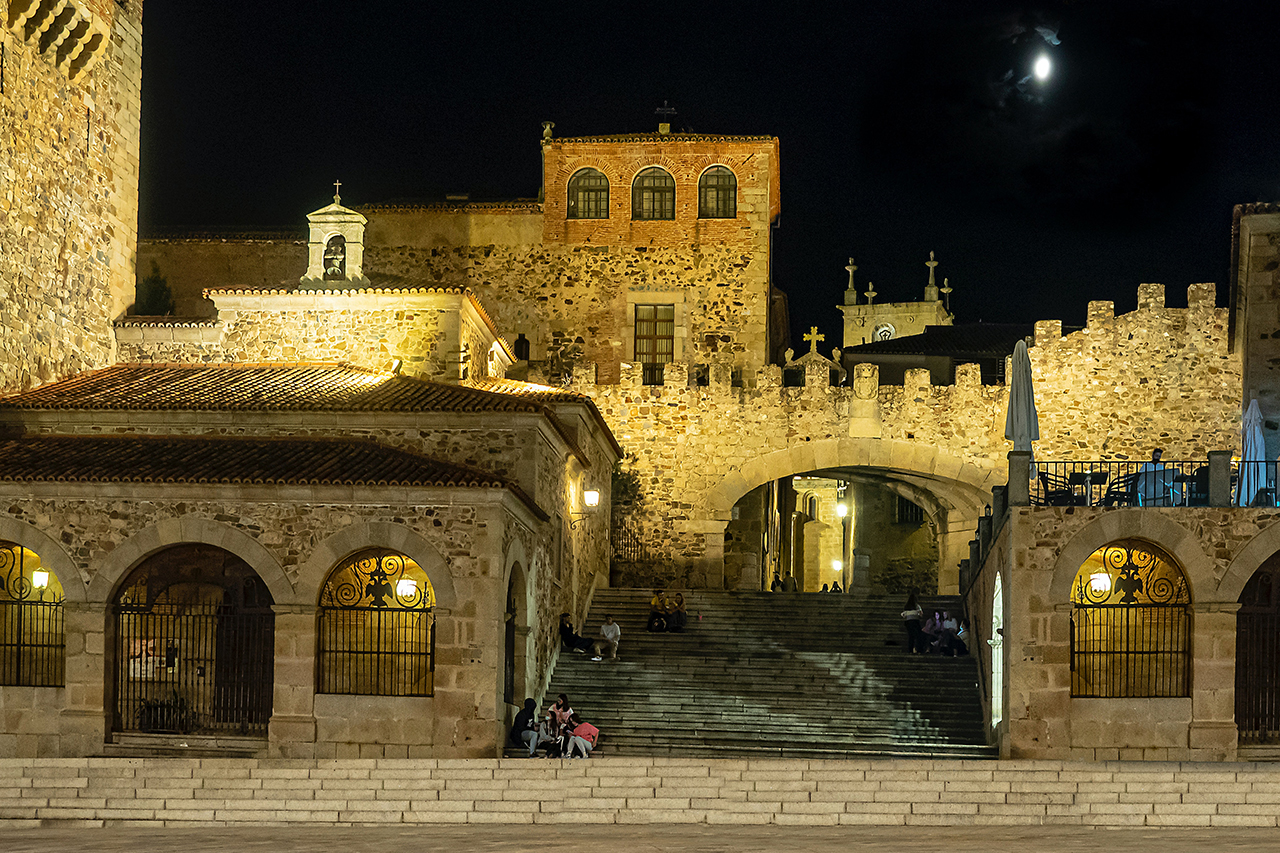
Nestled in the western part of Spain, Cáceres is a city that has witnessed the ebb and flow of several great civilizations. Its rich history is palpable in every stone and alley, making it a living museum of architectural and cultural evolution.
The Roman influence is evident in the remnants of walls and ancient structures scattered throughout the city. However, it’s the Islamic era that left a profound mark on Cáceres. The city flourished under Muslim rule, with many of its iconic towers and fortifications dating back to this period. As the Reconquista took hold, the Gothic influence began to emerge, especially in the city’s religious buildings. The Renaissance era brought a touch of elegance to the robust city, with palaces and mansions showcasing intricate stonework and emblematic facades.
Highlights of the old town:
- Torre de Bujaco: This iconic tower, standing tall beside the Plaza Mayor, is a testament to the city’s Islamic past. From its heights, one can get a panoramic view of the city’s sea of terracotta roofs and historic edifices.
- Santa María Cathedral: A blend of Gothic and Romanesque styles, this cathedral is a serene space of worship and reflection. Its interiors house a rich collection of religious art.
- Palacio de los Golfines de Abajo: A prime example of the city’s Renaissance architecture, this palace has witnessed many significant historical events, including the stay of Catholic Monarchs Ferdinand and Isabella.
- Arco de la Estrella: An emblematic gateway into the old town, this arch has welcomed visitors for centuries and stands as a symbol of the city’s enduring spirit.
Getting to Cáceres:
Cáceres, located in the Extremadura region, is well-connected to major Spanish cities, making it a convenient destination for travelers.
- By train: RENFE operates routes connecting Cáceres to Madrid, Seville, and other cities. The journey from Madrid takes about 3 hours. For schedules and bookings, visit the RENFE website.
- By car: The A-66 highway connects Cáceres to both the north and south of Spain. The drive from Madrid takes approximately 3.5 hours.
- By bus: Several bus operators run services to Cáceres from various Spanish cities. The journey duration varies depending on the route and service provider.
Cáceres, with its labyrinthine alleys, historic towers, and palatial mansions, offers a journey through time. As you wander its streets, you’ll be transported to eras gone by, each step echoing with tales of the many cultures that have called this city home.
Segovia: a timeless tapestry of roman grandeur and medieval majesty
The astounding roman aqueduct:
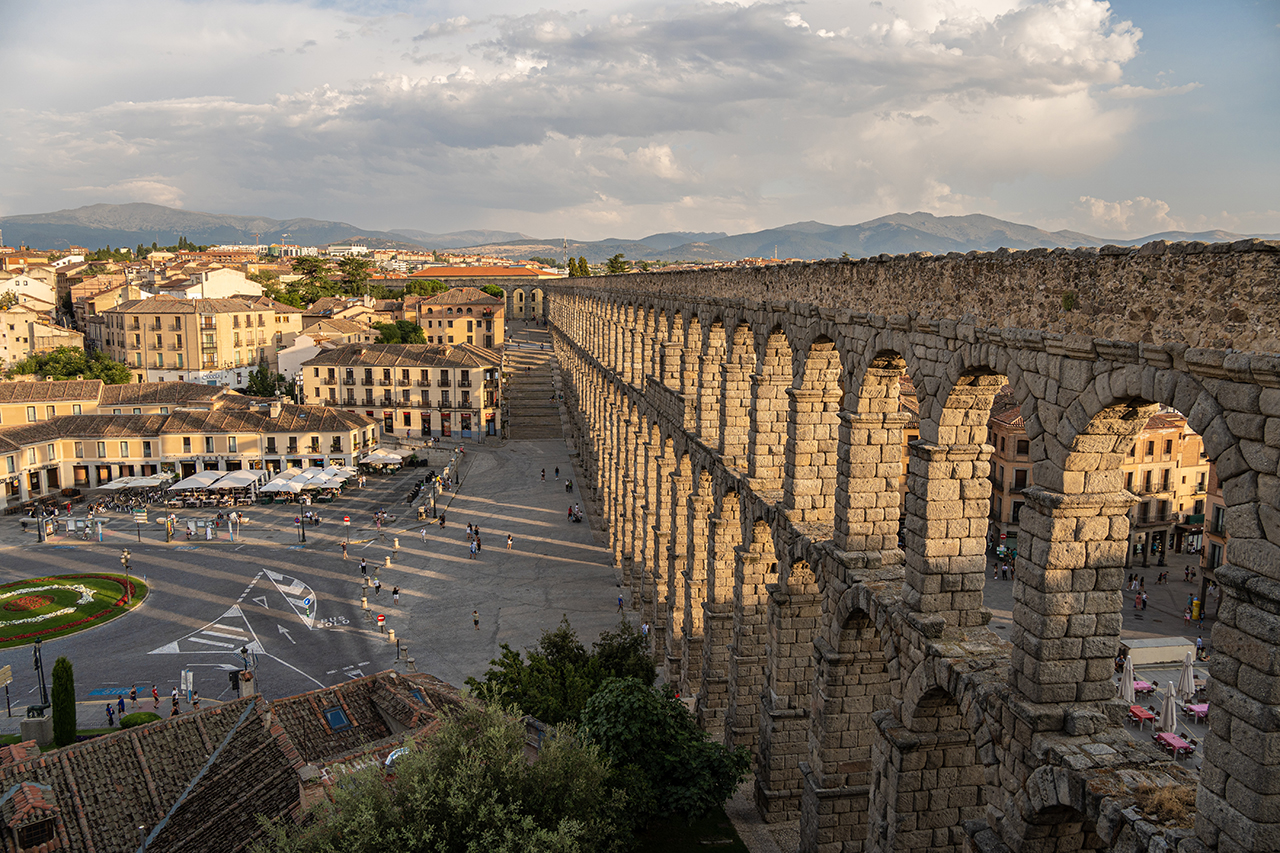
One of the most enduring symbols of Roman engineering prowess, the Aqueduct of Segovia stands as a testament to the empire’s architectural genius. Stretching over 818 meters and reaching a height of 28 meters at its tallest point, this ancient structure has been delivering water to the city for nearly two millennia. Built without the use of mortar, its massive granite blocks are held together solely by balance and friction, a marvel that continues to baffle modern engineers. Dominating the city’s landscape, the aqueduct is not just a relic of the past but a living monument that still serves its original purpose.
Alcázar, Cathedral, and other points of interest:
- Alcázar of Segovia: Resembling the bow of a ship, the Alcázar of Segovia is a fairy-tale fortress perched atop a rocky crag. With its pointed towers, crenellated walls, and ornate interiors, it’s said to have inspired Walt Disney’s Cinderella Castle. The fortress has served various roles throughout history, from a royal palace to a state prison.
- Segovia Cathedral: Known as the “Lady of Cathedrals,” this Gothic masterpiece dominates the city’s skyline. Its intricate stained glass windows, soaring spires, and lavishly decorated chapels make it a must-visit for architecture and art enthusiasts.
- Jewish Quarter: A testament to Segovia’s multicultural past, the Jewish Quarter is a maze of narrow alleys and historic buildings. The Didactic Center of the Jewish Quarter offers insights into the life and contributions of the Jewish community in medieval Segovia.
Getting to Segovia:
Segovia’s strategic location makes it easily accessible from various parts of Spain.
- By train: The high-speed AVE train connects Segovia to Madrid in just under 30 minutes. The Segovia-Guiomar station is a bit outside the city, but there are buses and taxis available for the short trip to the center. Check schedules and book tickets on the RENFE website.
- By car: Segovia is about a 90-minute drive from Madrid. The scenic route offers breathtaking views of the Castilian plateau.
- By bus: Regular bus services connect Segovia to Madrid and other nearby cities. The journey from Madrid’s Moncloa bus station takes about 1.5 hours.
From its Roman roots to its medieval splendors, Segovia is a city that weaves a rich tapestry of history and culture. Whether you’re marveling at the aqueduct’s grandeur, wandering the halls of the Alcázar, or simply soaking in the city’s ambiance, Segovia promises an unforgettable journey through time.
Salamanca: a beacon of knowledge amidst golden sandstone
The University and its pervasive influence:
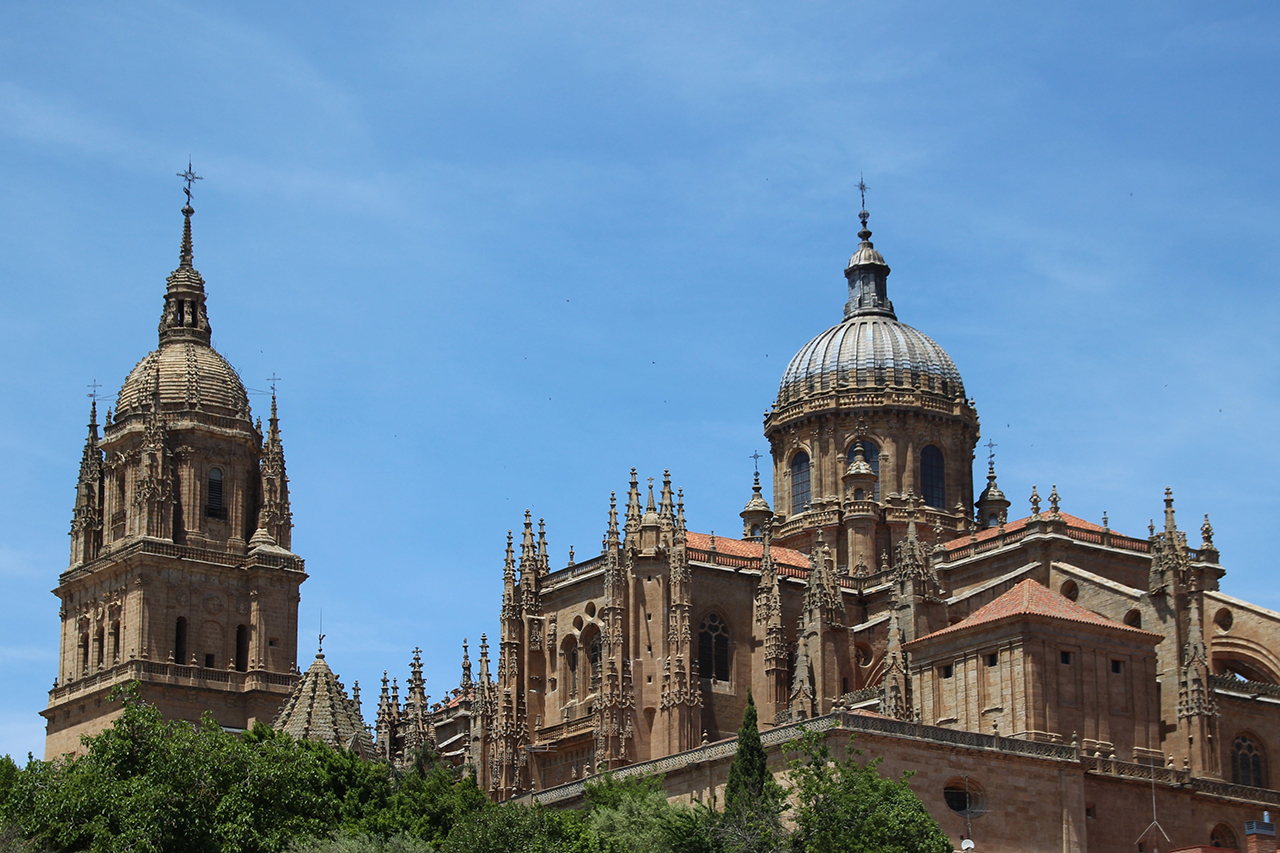
At the heart of Salamanca lies its University, one of the oldest in Europe and a beacon of knowledge since its inception in the 12th century. The University of Salamanca has not only shaped the city’s intellectual landscape but has also influenced its very architecture. The intricate façade of the main university building is a masterpiece of the Plateresque style, inviting visitors to play the age-old game of finding the carved frog, a symbol of good luck. Over the centuries, the university has attracted scholars from across the globe, infusing Salamanca with a vibrant, cosmopolitan atmosphere. Today, the city’s student population ensures a lively cultural scene, with events, debates, and performances echoing through its ancient halls and plazas.
Plaza Mayor and other iconic spots:
- Plaza Mayor: Often hailed as one of the most beautiful squares in Spain, Salamanca’s Plaza Mayor is a harmonious blend of Baroque architecture and daily life. Whether you’re sipping a café con leche at one of its many terraces or simply admiring the golden glow of its sandstone arches at sunset, the square is the undeniable heart of the city.
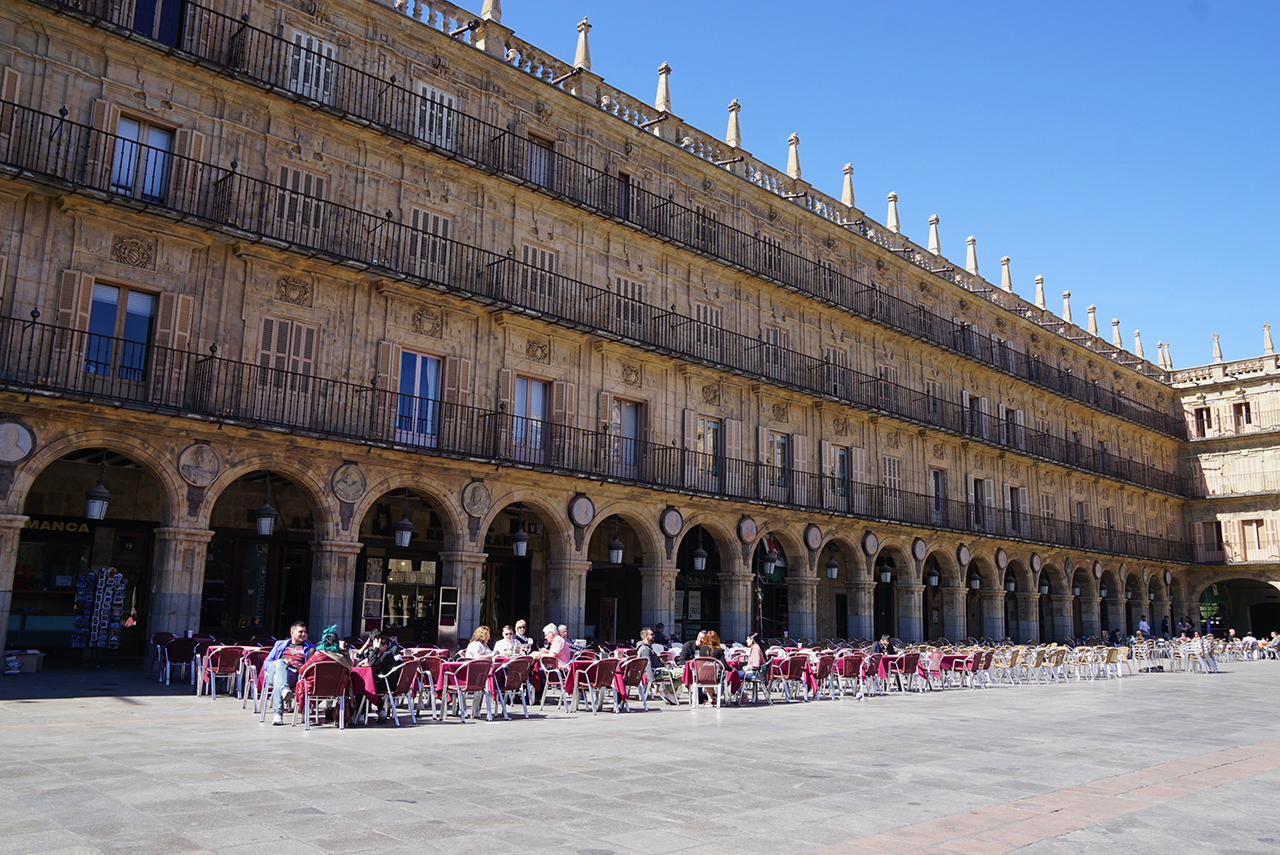
- Casa de las Conchas: An architectural marvel, this building is adorned with over 300 scallop shells, a symbol of the pilgrimage route to Santiago de Compostela. Today, it houses a public library, making it a perfect blend of history and modern utility.
- The Two Cathedrals: Unique to Salamanca, the city boasts not one, but two cathedrals. The Old Cathedral, a Romanesque gem, stands alongside the New Cathedral, a magnificent example of Gothic and Baroque styles. Their intertwined structures offer a journey through centuries of religious architecture.
Getting to Salamanca:
Reaching Salamanca is a breeze, thanks to its well-connected transportation network.
- By train: Regular train services connect Salamanca to Madrid and other major Spanish cities. The journey from Madrid takes about 2.5 hours. Check schedules and book tickets on the RENFE website.
- By car: Salamanca is about a 2.5-hour drive from Madrid, with well-maintained roads offering scenic views of the Castilian countryside.
- By bus: Several bus companies operate routes between Salamanca and other Spanish cities. The journey from Madrid takes approximately 2.5 hours.
Salamanca, with its golden sandstone buildings reflecting the setting sun, is not just a city but a living testament to Spain’s rich academic and architectural legacy. Whether you’re a history buff, an architecture enthusiast, or simply a curious traveler, Salamanca promises a journey of discovery and wonder.
Toledo: the timeless tapestry of three cultures
The “City of the Three Cultures”: Christian, Jewish, and Muslim:

Nestled atop a hill overlooking the Tagus River, Toledo stands as a living testament to Spain’s rich tapestry of cultures. Often referred to as the “City of the Three Cultures”, Toledo’s streets whisper tales of coexistence and convergence of Christian, Jewish, and Muslim heritages. For centuries, these three major religions lived side by side, influencing the city’s architecture, cuisine, and traditions. This harmonious blend is evident in the city’s winding alleys, historic synagogues, majestic cathedrals, and intricate mosques, making Toledo a unique mosaic of cultural heritage.
Must-Visit monuments and sites:
- Alcázar of Toledo: Dominating the city’s skyline, the Alcázar is a formidable fortress with roots dating back to Roman times. Over the centuries, it has served as a royal palace, a military academy, and now houses the Army Museum.
- Santa María La Blanca: Originally built as a synagogue, this architectural gem showcases the Moorish influence on Toledo’s Jewish community. Its horseshoe arches and ornate decoration are reminiscent of Andalusian artistry.
- Cathedral of Saint Mary of Toledo: A masterpiece of Gothic architecture, the cathedral boasts stunning stained glass windows, a magnificent altarpiece, and a collection of El Greco’s paintings.
- The Mosque of Cristo de la Luz: A testament to Toledo’s Islamic past, this 10th-century mosque, later converted into a church, retains its original Arab arches and columns.
Getting to Toledo:
Toledo’s proximity to Madrid makes it a popular day-trip destination, and reaching it is straightforward.
- By train: The high-speed AVE train connects Madrid’s Atocha station to Toledo in just 30 minutes. Check schedules and book tickets on the RENFE website.
- By car: Toledo is about an hour’s drive from Madrid. The A-42 highway offers a direct route, with scenic views of the Castilian plateau.
- By bus: Buses operated by ALSA run regularly from Madrid’s Estación Sur to Toledo, with the journey taking around an hour.
Toledo beckons travelers with its layered history and cultural richness. A walk through its cobbled streets is a journey through time, offering a glimpse into the harmonious coexistence of diverse civilizations. Whether you’re drawn to its art, history, or simply its atmospheric charm, Toledo promises an unforgettable experience.
Córdoba: a symphony of cultures and architectural marvels
The majestic Mezquita-Catedral:

In the heart of Córdoba lies one of Spain’s most iconic landmarks: the Mezquita-Catedral. Originally built as a mosque during the Islamic rule of the Iberian Peninsula, it was later converted into a cathedral after the Christian Reconquista. This architectural masterpiece seamlessly blends Moorish and Christian styles, creating a unique space where horseshoe arches coexist with Gothic chapels. The forest of columns, adorned with red and white stripes, leads visitors to the stunning mihrab, an ornate prayer niche that once faced Mecca. The subsequent Christian additions, including the Renaissance-style nave, only add to the Mezquita’s allure, making it a testament to Córdoba’s layered history.
The Jewish Quarter and other points of Iinterest:
- Jewish Quarter (Judería): Narrow, winding streets characterize Córdoba’s historic Jewish Quarter. Here, visitors can explore the Synagogue of Córdoba, one of the few remaining synagogues in Spain from the medieval period. The quarter also houses the Casa de Sefarad, a museum dedicated to Sephardic Jewish history and culture.
- Alcázar de los Reyes Cristianos: This fortress-palace, with its lush gardens and reflecting pools, was once the residence of Christian monarchs. It offers panoramic views of the city and the Guadalquivir River.
- Roman Bridge: Spanning the Guadalquivir River, this ancient bridge connects the city center to the Tower of Calahorra, a defensive fortress that now houses a museum on Córdoba’s three main cultures: Christian, Jewish, and Muslim.
Getting to Córdoba:
Córdoba’s central location in Andalusia makes it easily accessible from various parts of Spain.
- By train: The AVE high-speed train connects Córdoba to Madrid, Seville, and Málaga. The journey from Madrid takes under two hours. For schedules and bookings, visit the RENFE website.
- By car: Córdoba is well-connected by highways, especially the A-4 which links it to Madrid and Seville.
- By bus: Numerous bus companies, including ALSA, operate routes to Córdoba from various Spanish cities.
Córdoba, with its rich tapestry of cultures and architectural wonders, invites travelers to step back in time and immerse themselves in a city where history is etched into every stone and alleyway. Whether you’re wandering through the Mezquita, exploring the Judería, or simply soaking in the city’s ambiance, Córdoba promises an experience that lingers long after the journey ends.
Mérida: a roman legacy in the heart of Spain
Traces of the roman empire: theatre, amphitheatre, and beyond:
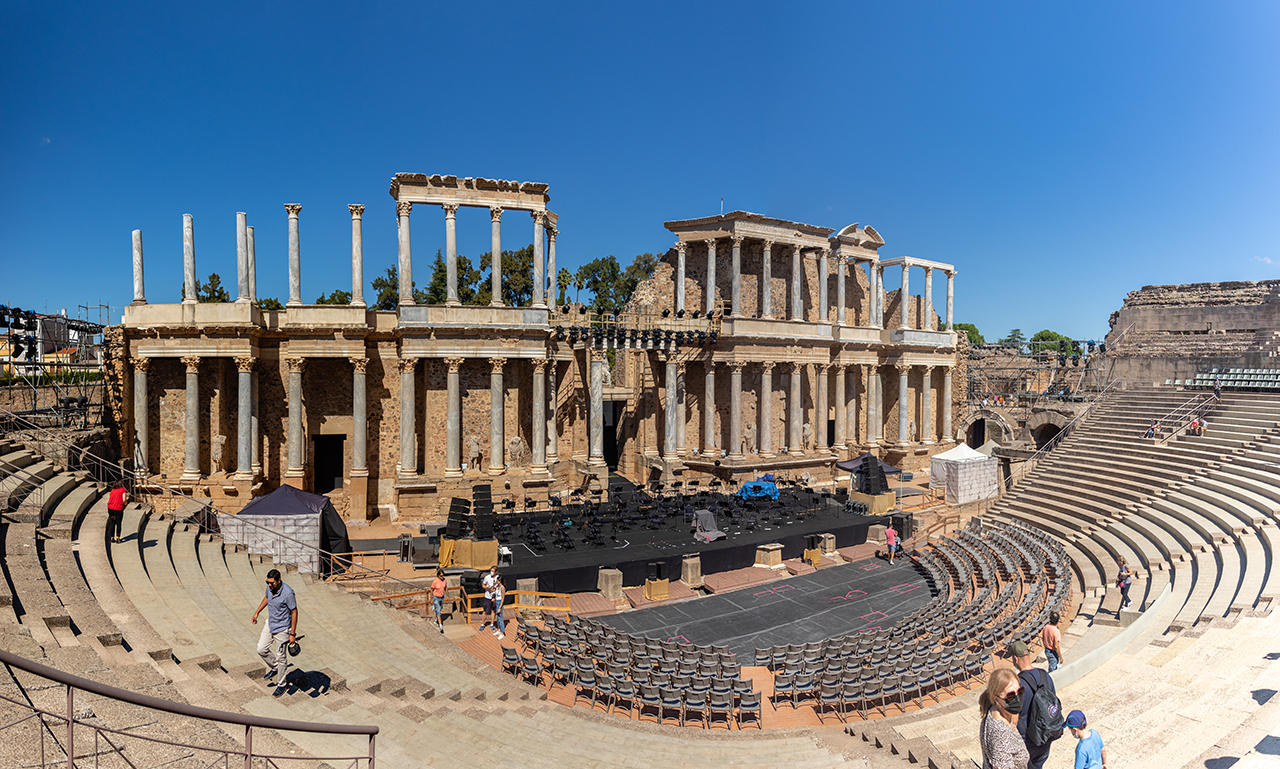
Mérida, once the capital of the Roman province of Lusitania, is a treasure trove of ancient Roman architecture. The city’s Roman Theatre, with its grand columns and statues, is a testament to the grandeur of Roman entertainment. Every summer, this theatre comes alive with performances, echoing the spectacles of ancient times. Adjacent to the theatre is the Roman Amphitheatre, a colossal structure where gladiatorial combats once enthralled audiences. Beyond these iconic structures, Mérida boasts a plethora of Roman remnants, including the Temple of Diana, the Roman Bridge spanning the Guadiana River, and the Arch of Trajan.
National museum of roman art:
Situated near the Roman Theatre, the Museo Nacional de Arte Romano (official website) is not just a museum but an architectural marvel designed by Rafael Moneo. The museum houses an extensive collection of artifacts from Roman Spain, including sculptures, mosaics, and everyday objects. The building itself, with its towering brick arches, pays homage to Roman architectural techniques while offering a modern interpretation.
Getting to Mérida:
Mérida’s strategic location in the region of Extremadura makes it easily accessible.
- By train: Mérida’s train station connects it to major Spanish cities, including Madrid and Seville. The journey from Madrid takes approximately four hours. For schedules and bookings, refer to the RENFE website.
- By car: Mérida is well-connected by the A-5 highway, which links it to Madrid and Badajoz.
- By bus: Several bus companies, including ALSA, operate routes to Mérida from various parts of Spain.
Mérida stands as a living testament to Spain’s Roman past, offering visitors a chance to step back in time and walk the same streets that Roman citizens once did. From its grand public buildings to the intricacies of Roman art, Mérida is a must-visit for history enthusiasts and travelers alike.
Granada: a moorish jewel in the heart of Andalusia
The Alhambra: a dreamlike palace:

Perched atop a hill overlooking the city, the Alhambra is Granada’s crowning glory. This sprawling palace and fortress complex, with its intricate stucco work, elegant courtyards, and lush gardens, stands as a testament to the grandeur of Moorish Spain. The Palacios Nazaríes, the main palace of the Alhambra, is a maze of ornate rooms and patios, each more breathtaking than the last. The Generalife Gardens, adjacent to the main palace, offer a tranquil retreat with their flowing water features and verdant greenery. The Alhambra is not just a historical monument but a living piece of art, a fusion of Islamic artistry and the natural beauty of its surroundings. For tickets and guided tours, visit the official Alhambra website.
The Albaicín district and its moorish influence:
Wandering through the narrow, winding streets of the Albaicín is like stepping back in time. This ancient Moorish quarter, with its whitewashed houses and cobblestone alleys, offers panoramic views of the Alhambra and the Sierra Nevada mountains beyond. The district’s mosques, transformed into churches after the Reconquista, and its traditional carmenes (Granadan villas) speak to the city’s rich cultural tapestry. The Mirador de San Nicolás is a popular viewpoint, where locals and tourists gather to watch the sunset over the Alhambra.
Getting to Granada:
Granada’s location in southern Spain makes it a prime destination for travelers.
- By plane: Federico García Lorca Granada-Jaén Airport serves both domestic and international flights. From the airport, the city is a short 30-minute drive or bus ride.
- By train: Granada’s recently renovated train station offers connections to major Spanish cities, including Madrid and Barcelona. Check the RENFE website for schedules and bookings.
- By bus: The city’s bus station connects Granada to other Andalusian cities and the rest of Spain. Companies like ALSA operate frequent routes.
Granada, with its rich Moorish heritage and vibrant Andalusian culture, is a city of contrasts, where history and modernity coexist harmoniously. Whether you’re exploring the majestic halls of the Alhambra or sipping tea in a traditional tetería (tea house) in the Albaicín, Granada promises an unforgettable experience.
Santiago de Compostela: the spiritual heart of Spain
The Cathedral and the Camino de Santiago:
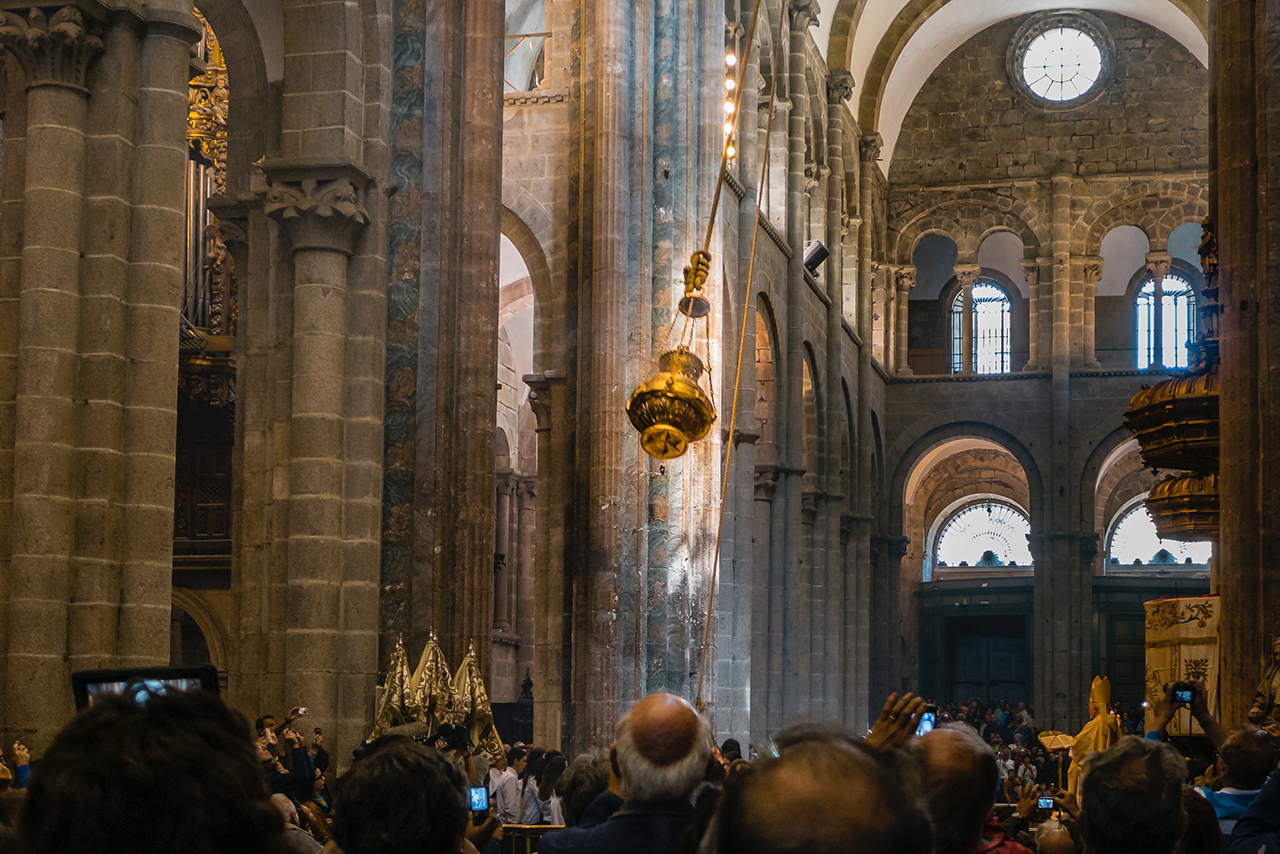
At the heart of Santiago de Compostela lies its magnificent Cathedral, a stunning piece of Romanesque, Gothic, and Baroque architecture. But more than its architectural grandeur, the Cathedral is the final destination of the Camino de Santiago, a network of pilgrimage routes leading to the shrine of the apostle Saint James the Great. For centuries, pilgrims from all over the world have embarked on this spiritual journey, trekking through scenic landscapes, mountains, and quaint villages. The Cathedral houses the relics of Saint James, and the Praza do Obradoiro, the main square, is where many pilgrims celebrate the culmination of their journey. For those interested in the pilgrimage or the history of the Camino, the Pilgrimage Museum offers a deep dive into its rich past.
Traditions and restivities:
Santiago de Compostela is a city steeped in tradition. One of the most significant events is the Feast of Saint James on July 25th, a day filled with processions, music, and fireworks. The highlight is the ‘fuegos del Apóstol’, a spectacular firework display over the Cathedral. Another tradition is the swinging of the Botafumeiro, a giant incense burner, inside the Cathedral – a sight to behold and a symbol of purification for the pilgrims.
Getting to Santiago de Compostela:
Reaching Santiago is relatively straightforward, given its prominence as a pilgrimage destination.
- By plane: Santiago de Compostela Airport connects the city to various Spanish and European destinations. The airport is about 11 km from the city center, with regular bus and taxi services available.
- By train: The city’s train station offers connections to major Spanish cities, including Madrid, Barcelona, and Bilbao. For schedules and bookings, consult the RENFE website.
- By bus: Santiago’s bus station is well-connected to other parts of Galicia and Spain. Companies like ALSA and Monbus operate regular routes.
Santiago de Compostela is not just a city; it’s an experience. Whether you’re a pilgrim or a traveler, the city’s spiritual energy, rich history, and vibrant traditions promise a journey of discovery and reflection.
Alcalá de Henares: A literary legacy and academic excellence
Cradle of Cervantes and the Complutense University:
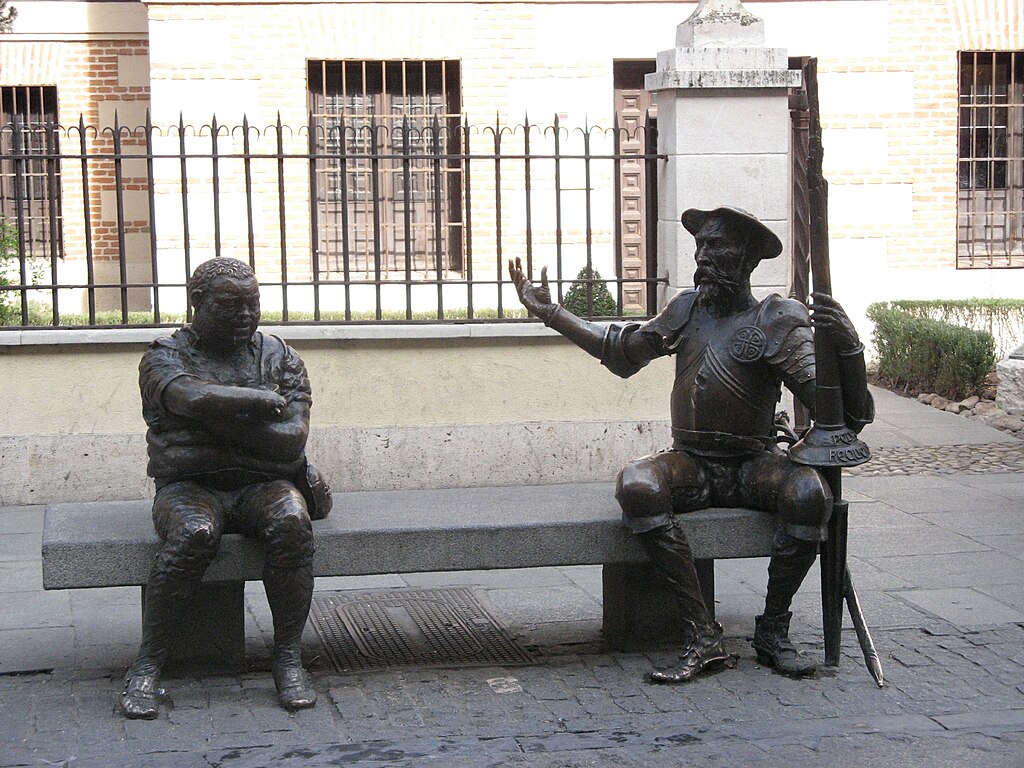
Alcalá de Henares is not just another city in Spain; it’s the birthplace of one of the world’s most celebrated authors, Miguel de Cervantes, the genius behind Don Quixote. A visit to the Cervantes Birthplace Museum (official website) offers a glimpse into the life and times of the author, with the house preserved to reflect the 16th-century setting.
But Cervantes isn’t the only feather in Alcalá’s cap. The city is also home to the University of Alcalá, originally known as the Complutense University. Founded in the late 15th century, it was one of the world’s pioneering universities and played a crucial role in shaping academic and cultural thought in Spain and beyond. The university’s historic buildings, with their stunning plateresque façade, are a testament to its illustrious past.
Places of interest and cultural events:
Beyond Cervantes and academia, Alcalá boasts a rich tapestry of history and culture. The Archbishop’s Palace, the Gothic-style Magistral Cathedral, and the Roman ruins are just a few of the many sites that beckon history enthusiasts.
For those visiting in October, the Cervantes Week is a must-experience. The city comes alive with theatrical performances, medieval markets, and parades, all celebrating the legacy of its most famous son.
Getting to Alcalá de Henares:
- By train: Alcalá de Henares is well-connected by train, with regular services from Madrid’s Atocha and Chamartín stations. The journey takes about 40 minutes. Check the RENFE website for schedules.
- By bus: Buses operated by ALSA and other regional providers connect Alcalá to Madrid and other nearby towns.
- By car: Alcalá is about 30 km northeast of Madrid and can be reached via the A-2 motorway.
Alcalá de Henares is a city that seamlessly blends its rich history with a vibrant present. Whether you’re a literary enthusiast, a history buff, or just a curious traveler, Alcalá promises a journey through Spain’s illustrious past and its dynamic present.
Ibiza: a historical gem beyond the party scene
Beyond the party: a historic old town:

When one thinks of Ibiza, images of pulsating nightclubs, world-renowned DJs, and sun-kissed beaches often come to mind. However, the island offers much more than just a vibrant nightlife. At its heart lies Dalt Vila, the historic old town of Ibiza, a UNESCO World Heritage site that stands as a testament to the island’s rich history. Wandering through its narrow, cobbled streets, one can discover a myriad of secrets from the Phoenician, Roman, and Arab eras, all of which have left their indelible mark on this Mediterranean jewel.
The walls and fortifications:
One of the most iconic features of Dalt Vila is its Renaissance-era fortifications. These walls, built in the 16th century, were designed to protect the island from pirates and invaders. As you walk along the battlements, you’ll be treated to panoramic views of the island and the azure waters of the Mediterranean. The seven bastions, each with its own unique history, offer insights into the island’s strategic importance through the ages.
Getting to Ibiza:
- By air: Ibiza has its own international airport, Ibiza Airport (IBZ), which is well-connected to major cities in Europe, especially during the summer months. Airlines like Iberia, Ryanair, and easyJet operate frequent flights.
- By sea: Regular ferries connect Ibiza to mainland Spain, especially from cities like Barcelona, Valencia, and Denia. Companies such as Balearia and Trasmediterranea offer these services.
- Getting around: Once on the island, there are numerous car rental agencies, taxis, and buses to help you explore both the historic sites and the more modern attractions.
Ibiza, often dubbed the “White Isle”, is a destination of contrasts. While its nightlife is legendary, its historical heart offers a tranquil and enlightening experience, showcasing the depth and diversity of Spanish heritage. Whether you’re dancing the night away or exploring ancient fortifications, Ibiza promises an unforgettable journey.
San Cristóbal de La Laguna: Canary Island’s historical gem
A jewel in the Canary Islands:
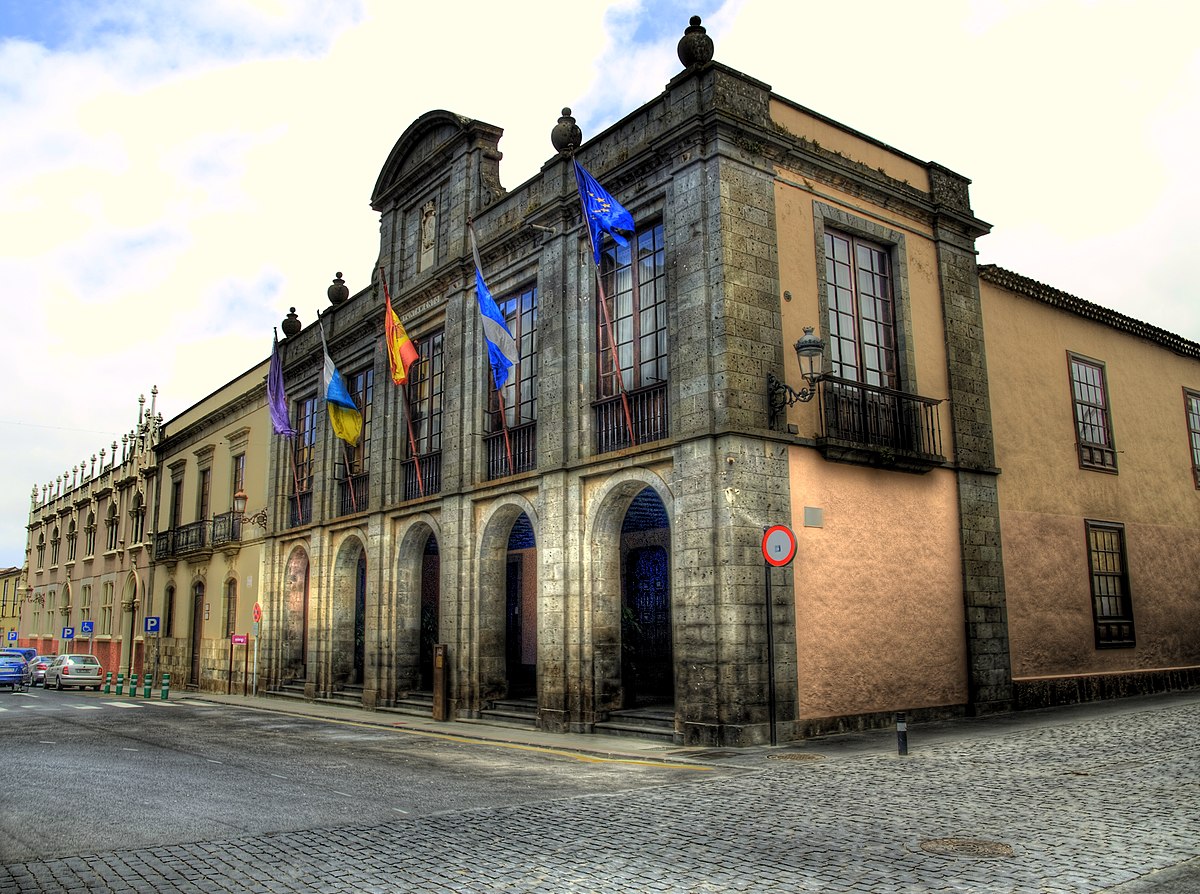
Nestled in the northern part of Tenerife, the largest of Spain’s Canary Islands, lies San Cristóbal de La Laguna. Often simply referred to as ‘La Laguna’, this city is a world away from the bustling tourist resorts that the islands are often associated with. Declared a UNESCO World Heritage Site in 1999, La Laguna is a testament to the rich history and cultural heritage of the Canaries, offering a unique blend of traditional Canarian architecture, vibrant festivals, and a lively student population, thanks to the presence of the University of La Laguna.
Traditional architecture and festivities:
Walking through the streets of La Laguna is like taking a step back in time. The city boasts a plethora of colonial-style buildings, churches, and mansions, each with its own story to tell. The colorful facades and wooden balconies are characteristic of Canarian architecture, making it a photographer’s dream.
But it’s not just the buildings that make La Laguna special. The city is also renowned for its traditional festivities. One of the most notable is the Easter Procession, where the streets come alive with music, dance, and religious fervor. Another highlight is the Fiestas del Cristo, celebrated in September, which sees the city adorned with decorations and filled with events ranging from concerts to traditional Canarian wrestling.
Getting to San Cristóbal de La Laguna:
- By air: The closest airport to La Laguna is Tenerife North Airport (TFN). It caters mainly to domestic flights and some European destinations. Airlines such as Iberia, Binter Canarias, and Air Europa operate here.
- By road: La Laguna is well-connected by road to other parts of Tenerife. The TF-5 motorway is the main route connecting the city to the northern parts of the island, while the TF-1 motorway provides access to the south.
- Public transport: Tenerife boasts an efficient public transport system, with buses operated by TITSA connecting La Laguna to other parts of the island. Additionally, the Tenerife Tram has a line running from La Laguna to the capital, Santa Cruz.
San Cristóbal de La Laguna offers a refreshing change of pace for those looking to delve deeper into the Canarian culture. With its rich history, vibrant festivities, and welcoming locals, it’s a destination that promises an authentic and unforgettable experience.
Baeza and Úbeda: twin jewels of Andalusian renaissance
Twin cities of the Andalusian renaissance:
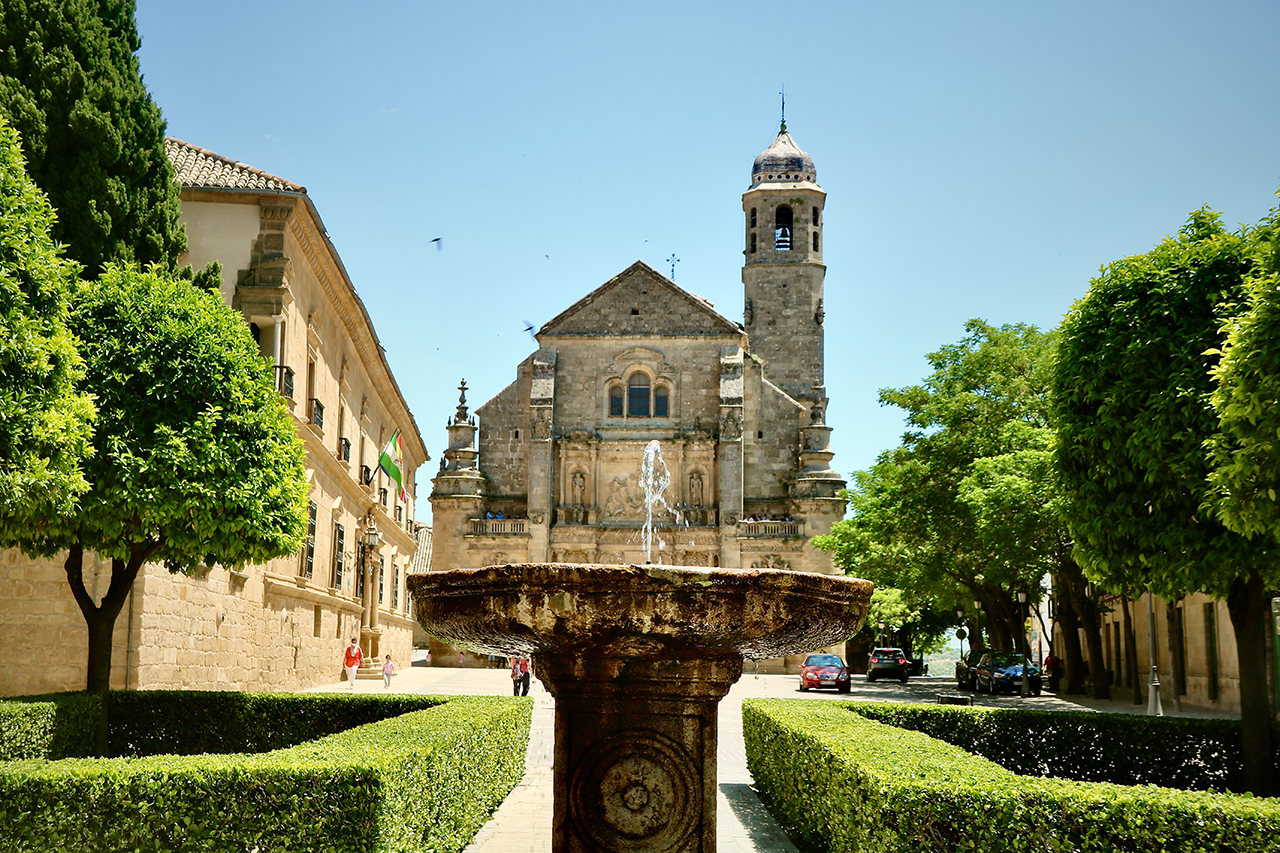
In the heart of Andalusia, away from the hustle and bustle of the region’s more famous cities, lie Baeza and Úbeda. Often referred to as the ‘twin cities’, these neighboring towns are a testament to the splendor of the Spanish Renaissance. In 2003, UNESCO recognized their significance by designating them as World Heritage Sites, highlighting their exceptional urban integration of architectural and urban Renaissance solutions of Italian influence into the existing typologies of the region.
Monuments and points of interest:
- Baeza:
- Cathedral of Baeza: Originally a mosque, it was converted into a Christian church before being rebuilt in the 16th century in a Renaissance style.
- Fuente de Santa Maria: A beautiful fountain located next to the cathedral, showcasing the intricate design of the Renaissance period.
- Palacio de Jabalquinto: A Gothic palace with a facade adorned with diamond-pointed stonework and heraldic symbols.
- Úbeda:
- Vázquez de Molina Square: Often considered one of the most beautiful squares in Spain, it’s surrounded by several Renaissance buildings, including the Palacio de las Cadenas.
- Sacra Capilla del Salvador: A funerary chapel and one of the most significant examples of Spanish Renaissance architecture.
- Hospital de Santiago: Known as the “Andalusian Escorial”, this building combines religious, civil, and assistance functions.
Getting to Baeza and Úbeda:
- By road: Both cities are well-connected by the A-32 motorway. They are about 10 km apart, making it easy to visit both in a single trip.
- By bus: There are regular bus services connecting both towns to major cities like Jaén, Granada, and Madrid. Companies such as ALSA operate on these routes.
- By train: Úbeda has a train station, Estación de Linares-Baeza, which is actually located between the two towns. It’s well-connected with high-speed train services to Madrid, Seville, and other major cities.
Baeza and Úbeda, with their rich history and stunning Renaissance architecture, offer a unique journey into Spain’s past. For those looking to explore the lesser-known gems of Andalusia, these twin cities promise an experience filled with culture, beauty, and history.
Celebrating Spain’s treasured cities
Spain, a country renowned for its vibrant culture, diverse landscapes, and rich history, is home to a myriad of cities that have been recognized by UNESCO for their unparalleled heritage. From the fortified walls of Ávila to the Renaissance splendor of Baeza and Úbeda, each of these cities offers a unique window into Spain’s multifaceted past.
The importance of preserving and visiting these cities cannot be overstated. Not only do they serve as living museums, showcasing architectural marvels and centuries-old traditions, but they also play a pivotal role in fostering cultural understanding and appreciation. Cáceres with its blend of Roman, Islamic, Gothic, and Renaissance influences; Segovia with its awe-inspiring Roman aqueduct; Salamanca and its historic university; the multifaceted religious heritage of Toledo; the mesmerizing Mezquita-Catedral of Córdoba; Mérida and its Roman legacy; the dreamlike palaces of Granada; the pilgrimage destination of Santiago de Compostela; Alcalá de Henares, the birthplace of Cervantes; the island charm of Ibiza; and the Canary gem of San Cristobal de la Laguna – each city tells a story, each corner whispers legends of old.
For travelers, these cities offer more than just sightseeing opportunities. They provide a chance to step back in time, to walk the same streets as ancient scholars, warriors, artists, and kings. To visit them is to embark on a journey, one that promises to leave an indelible mark on the soul.
In a world that’s rapidly changing, it’s crucial to cherish and protect these bastions of history and culture. They remind us of where we’ve come from, the challenges we’ve overcome, and the timeless beauty that humanity can create.
So, to all who read this, an invitation is extended: Come, explore, and immerse yourself in the rich tapestry of history and culture that is Spain. Let these cities be your guide, and let their stories become a part of your own.





